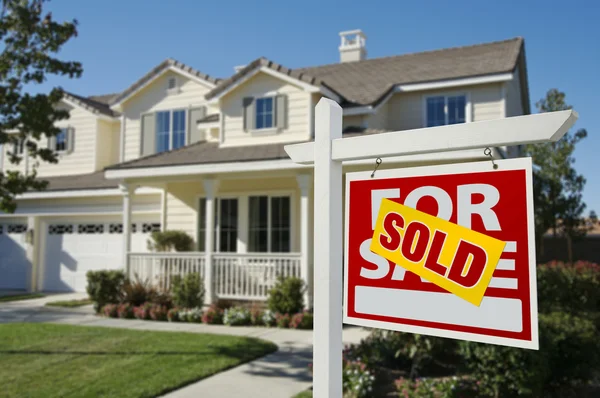Real Estate
U.S. Home Sales Jumped 6.7% in January Amid Record-Low Inventory
First American News LLC-Raleigh, NC: Buyers snapped up houses across the country as mortgage rates climbed. The hot U.S. housing market extended into the new year as buyers rushed to purchase homes in the face of record-low inventory and climbing mortgage rates.
Get 5-Years of The Wall Street Journal Digital News For $59
Existing-home sales rose 6.7% in January from the prior month to a seasonally adjusted annual rate of 6.5 million, the National Association of Realtors said Friday, with home sales increasing in regions across the country. January sales fell 2.3% from a year earlier.
The housing market remains extremely competitive. Rising mortgage-interest rates in recent weeks have prompted buyers to move quickly in case rates climb further, real-estate agents say. Homes are frequently selling within days for more than their list prices. More houses are being purchased with cash and first-time buyers are getting squeezed out.
Still, the shortage of homes on the market is holding back the number of sales, economists say. On top of that, some buyers have been pushed to the sidelines as rising home prices and higher interest rates have made homeownership less affordable.
The median existing-home price rose 15.4% in January from a year earlier, NAR said, to $350,300.
“Buyers were likely anticipating further rate increases and locking in at the low rates, and investors added to overall demand with all-cash offers,” said Lawrence Yun, NAR’s chief economist.
Get your daily market news at First American News LLC
Rising mortgage rates could have a limited impact on housing demand this year, in part because home buyers have already endured pandemic-related pressures and constraints on their ability to secure a purchase, Realtor.com Chief Economist Danielle Hale said.
“So far, buyer activity has been resilient to the extra costs of homeownership even in the face of factors that could shift or squeeze housing budget priorities, including a fading pandemic mind-set and inflation pressures,” Ms. Hale said. She expects home sales to remain high this year because of “rising workplace flexibility,” which can allow prospective home buyers to expand geographic searches to find more affordable homes.
The shortage of housing for sale is expected to continue and keep pressure on the real-estate market. “It will take years to build our way out of the supply-and-demand imbalance that should keep home prices rising strongly this year despite higher rates,” said Robert Frick, corporate economist at Navy Federal Credit Union.
Affordability has worsened for home buyers since the start of the pandemic, with home prices surging across the U.S. The average rate on a 30-year fixed-rate mortgage was 3.92% as of Thursday, said mortgage finance giant Freddie Mac, the highest level since May 2019.
So far, rising mortgage-interest rates have hardly dented buyer demand, which still far outpaces supply, say market participants.
One reason is that rent prices are also rising quickly, so prospective first-time home buyers are reluctant to wait.
“People’s leases are coming due and they’re seeing just massive increases,” said Christopher Maher, chief executive of OceanFirst Financial Corp. in New Jersey. “That really squeezes the first-time home buyer.”
There were 860,000 homes for sale at the end of January, down 2.3% from December and down 16.5% from January 2021, NAR said. This is the lowest level on record since NAR began tracking total existing-home inventory in 1999. At the current sales pace, there was a 1.6-month supply of homes on the market at the end of January, also a record low.
The NAR tally of homes for sale includes properties that are under contract. Excluding pending sales, the inventory shortage is even steeper. In the four weeks ended Feb. 13, the number of active listings fell 27% from a year earlier to 447,000, according to real-estate brokerage Redfin Corp.
Nicole Bukszar-Lavelle and Thomas Lavelle struggled to find houses that met their criteria in the Cleveland area.
“There were maybe 11 houses at one time within our price range that fit our qualifications, and we had probably seen all of them, and none of them were anything spectacular,” Mrs. Bukszar-Lavelle said. “I was just hoping and praying something would pop up.”
The couple toured a three-bedroom house in Brunswick, Ohio, the day it went on the market and learned that seven other showings had already been scheduled. They put in an offer that day.
“We immediately knew we had to jump on it. We couldn’t wait,” Mrs. Bukszar-Lavelle said. They beat out three competing offers and bought the house in January for $255,000. “I’m really excited,” she said.
The typical home sold in January was on the market for 19 days, unchanged from the prior month, NAR said.
The market is especially competitive at lower price points, where buyers with limited cash can be outbid by investors or cash buyers. About 27% of January existing-home sales were purchased in cash, up from 19% a year earlier, NAR said.
“There’s so little supply, and there’s a lot of money out there,” said Gregg Menell, a real-estate broker in Scarsdale, N.Y. “There are some [buyers] who have gotten so disheartened, because they’ve lost out on so many bidding wars, that some have just given up.”
The share of first-time buyers in the market fell to 27%, down from 33% a year earlier.
Existing-home sales rose the most month-over-month in the South, up 9.3%, and in the Northeast, up 6.8%.
Building activity has increased due to the strong demand, but builders have been slowed by supply-chain issues and labor shortages. A measure of U.S. home-builder confidence declined in February, the National Association of Home Builders said this week.
Housing starts, a measure of U.S. home-building, fell 4.1% in January from December, the Commerce Department said this week. Residential permits, which can be a bellwether for future home construction, rose 0.7%.


